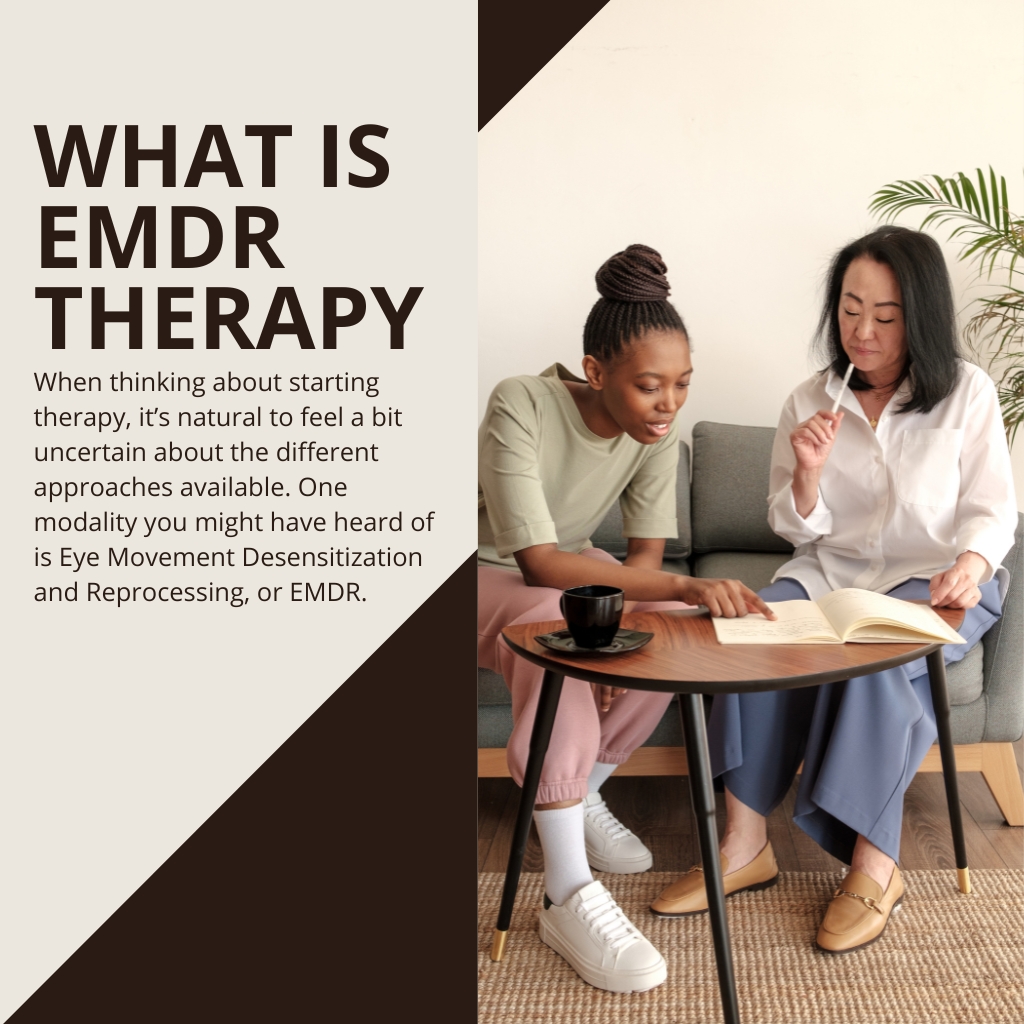Just How EMDR Therapy Functions: an In-depth Take A Look At the Process and Its Performance
EMDR treatment has actually become a famous therapy for trauma-related disorders. Its structured approach consists of numerous stages created to facilitate the handling of distressing memories. Central to this approach is the idea of reciprocal stimulation, which plays a vital function in just how memories are refined. Understanding these aspects exposes much concerning the therapy's effectiveness. Nonetheless, what especially occurs during an EMDR session, and just how does it influence the healing journey?
Comprehending the Principles of EMDR Treatment
EMDR therapy, or Eye Movement Desensitization and Reprocessing, operates the property that unsettled distressing experiences can impede psychological wellness. This cutting-edge restorative strategy intends to help with the handling of distressing memories, enabling people to gain a healthier perspective on their past. Central to EMDR is the principle of bilateral stimulation, commonly attained with assisted eye movements, which is believed to help incorporate traumatic memories right into an extra flexible structure.

The 8 Phases of EMDR Treatment
The process of EMDR treatment unfolds over eight unique phases, each made to assist customers through an organized approach to recovery trauma. The first stage entails history-taking, where the therapist assesses the customer's history and determines target memories. In the second phase, customers find out relaxation strategies to take care of distress. The 3rd stage concentrates on determining unfavorable ideas related to the distressing memory.
The fourth phase is where the desensitization procedure begins, permitting clients to refine the traumatic memory. The 5th stage involves mounting positive ideas to change the adverse ones. In the sixth phase, clients are guided to examine their emotional and physical reactions to the processed memory. The seventh stage stresses closure, helping customers return to a state of stability. The eighth stage entails reevaluation, where therapists and customers assess development and address any kind of residual distress. This complete method fosters a path to healing and durability.
The Role of Reciprocal Stimulation
Bilateral excitement is a crucial element of EMDR treatment, promoting the processing of stressful memories. This technique entails alternating excitement of both hemispheres of the mind, normally achieved with eye activities, acoustic tones, or tactile experiences. The purpose of bilateral excitement is to engage the brain's natural details processing system, which may come to be disrupted complying with injury.
By activating both sides of the brain, reciprocal excitement helps clients access and reprocess distressing memories in a much more flexible means. important site This approach motivates the combination of stressful experiences, decreasing their emotional fee and making it possible for clients to develop new point of views.

Additionally, reciprocal stimulation may advertise relaxation and reduce anxiousness during sessions, creating a more secure atmosphere for clients to challenge agonizing memories. Eventually, this method boosts the restorative procedure, enabling people to approach healing and resolution.
Proof Supporting the Effectiveness of EMDR
Study has shown that EMDR therapy works in dealing with various psychological conditions, specifically post-traumatic stress and anxiety problem (PTSD) Various studies have actually shown substantial reductions in PTSD symptoms complying with EMDR treatment. A meta-analysis of randomized controlled tests located that EMDR was as effective as cognitive behavioral treatment (CBT) for PTSD, with long-term effects observed even months after treatment. In addition, the American Psychological Organization and the Globe Health Organization support EMDR as an advised therapy for trauma-related disorders.
Beyond PTSD, study suggests that EMDR can likewise profit people struggling with anxiousness, depression, and phobias. A growing body of evidence sustains its usage in varied populaces, consisting of children and veterans - emdr therapy new york city. On the whole, the building up research study highlights EMDR's prospective as a flexible restorative choice, paving the means for further expedition right into its mechanisms and applications in mental wellness therapy
What to Anticipate Throughout an EMDR Session
During an EMDR session, clients can expect a structured yet flexible approach targeted at handling stressful memories. The specialist begins by establishing a secure setting, where customers can feel comfortable sharing their experiences. First discussions concentrate on recognizing details memories and connected unfavorable beliefs.
Customers are directed to focus on these memories while simultaneously taking part in reciprocal stimulation, usually through guided eye activities or touching. This twin focus aims to facilitate the processing of the trauma, permitting clients to reframe their experiences and reduce psychological distress.
Throughout the session, therapists monitor customers' actions, changing the pace and strategy as required. Sessions may consist of leisure strategies or cognitive restructuring to reinforce positive beliefs. Generally, clients can expect a supportive ambience that encourages self-exploration and recovery, inevitably causing a better sense of psychological well-being.
Often Asked Questions
Is EMDR Therapy Ideal for Children or Adolescents?
EMDR therapy can be appropriate for children and adolescents, offered it is adapted to their developing demands (emdr therapy new york city). Clinicians typically change techniques to guarantee security and performance, sustaining more youthful populaces in processing trauma and emotional distress
For How Long Does EMDR Therapy Commonly Last?
EMDR treatment generally lasts between 8 to 12 sessions, with each session ranging from 60 to 90 minutes. Specific requirements and the complexity of injury can impact the total duration of treatment.
Can EMDR Therapy Be Done From Another Location or Online?
EMDR therapy can indeed be carried out remotely or online. Several professionals have adjusted their methods to online environments, enabling customers to take part in reliable sessions from the comfort of their homes, keeping therapeutic advantages.
What Are the Possible Adverse Effects of EMDR?
Possible negative effects of EMDR treatment learn the facts here now might include momentary emotional distress, Home Page increased anxiety, dazzling memories, and physical discomfort. Individuals could also experience tiredness or frustrations following sessions, as the mind processes extreme sensations and memories.
How Does EMDR Compare to Typical Talk Therapy?

EMDR therapy, or Eye Movement Desensitization and Reprocessing, runs on the facility that unresolved stressful experiences can prevent psychological well-being. The procedure of EMDR therapy unravels over 8 distinct stages, each developed to guide customers through an organized technique to healing injury. Bilateral excitement is an important part of EMDR therapy, promoting the processing of traumatic memories. Throughout an EMDR session, customers can expect an organized yet versatile approach aimed at handling terrible memories. Possible side effects of EMDR treatment might include short-lived emotional distress, enhanced anxiety, brilliant memories, and physical discomfort.